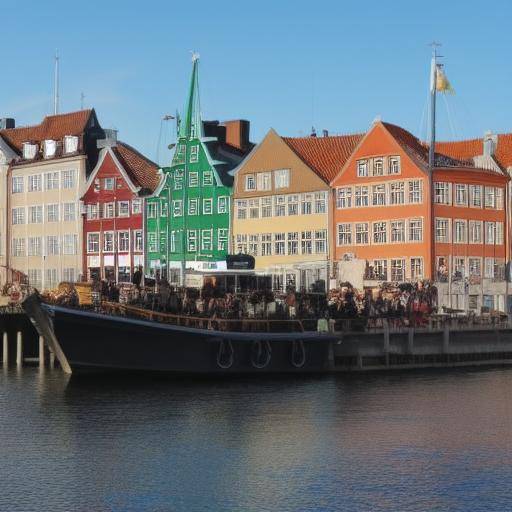
Introduction
Greetings! We invite you to explore Copenhagen, a pioneer city in ecological initiatives. In this article, we will immerse ourselves in five innovative ecological initiatives that have made Copenhagen a global benchmark for sustainability. From its innovative cycleways that promote green transport, to its clean energy strategies and its avant-garde green architecture, you will discover how this city has integrated sustainability in its urban DNA. Join us on this exciting journey through the ecological innovations that will resonate in your environmental consciousness.
History and Background
Copenhagen, a city rich in history and culture, has undertaken an impressive journey towards sustainability. Since the establishment of the first cycle in the 1960s until the adoption of an ambitious clean energy plan in the new millennium, the city has demonstrated a strong commitment to the protection of the environment. The innovative and progressive mentality of its inhabitants has been key to this process.
In recent years, Copenhagen has become a laboratory for green architecture, whose avant-garde constructions are redefining standards of efficiency and sustainability in urban design. These exemplary developments have positioned Copenhagen as a global benchmark in the development of ecological solutions.
Analysis in Deep
1. Innovative cycles
The innovative cycleways in Copenhagen have transformed the way the city addresses urban transport. With more than 390 kilometres of bike-exclusive lanes, the city has fostered a cultural change that promotes sustainable mobility and reduction of carbon emissions. This infrastructure has not only improved air quality and reduced traffic, but also increased physical activity among citizens, generating positive impacts on public health.
2. Clean energy
Copenhagen has taken giant steps towards the adoption of clean energy. Since the implementation of urban heating systems based on renewable sources to the transition to marine wind energy, the city has demonstrated an unwavering commitment to decarbonization. These initiatives have positioned Copenhagen as a global leader in the generation of clean energy, paving the way for a more sustainable and fossil-free city.
3. Architecture
The green architecture of Copenhagen is a testimony to its commitment to sustainability. From energy-certified buildings that minimize resource consumption to urban rehabilitation projects that incorporate energy efficiency solutions, the city has shown how the built infrastructure can coexist in harmony with the natural environment. This architectural and environmental integration has established a new standard for sustainable urban development.
4. Waste and Waste Management
Copenhagen stands out for its advanced waste management and recycling programs. The city has implemented efficient systems for the separation of waste from origin, collection and processing of recyclable materials. In addition, waste incineration plants with energy recovery not only manage waste effectively, but also generate electricity and heating for the city, contributing to a circular economy and reducing dependence on fossil fuels.
5. Green Spaces and Biodiversity
Copenhagen's commitment to the creation and maintenance of green spaces is evident in its many parks, gardens and natural areas. These spaces not only provide a shelter for urban biodiversity, but also offer citizens places for recreation and well-being. Initiatives such as green roofs and community gardens promote biodiversity and sustainability, creating a more lively and resilient urban environment.
Conclusion
Copenhagen has become a role model for green initiatives, demonstrating that it is possible to combine urban development with environmental sustainability. Innovations in transport, clean energy, green architecture, waste management and green spaces are just a few examples of how the city is leading the road to a more sustainable future. These initiatives not only improve the quality of life of residents, but also inspire other cities around the world to adopt more ecological practices.
Frequently asked questions
- **How has the implementation of cycleways in Copenhagen impacted?**The cycleways have reduced carbon emissions, improved air quality, reduced vehicle traffic and promoted greater physical activity among citizens.
- **What kind of clean energy is used in Copenhagen?**Copenhagen uses marine wind energy and urban heating systems based on renewable sources.
- **What are the features of green architecture buildings in Copenhagen?**Green architecture buildings in Copenhagen have energy certification, use sustainable materials and energy efficiency solutions, and often incorporate green roofs and rainwater collection systems.
- **How does Copenhagen manage its waste?**The city uses waste separation systems in origin, efficient collection, and incineration plants with energy recovery to generate electricity and heating.
- **What initiatives promote biodiversity in Copenhagen?**Initiatives such as green roofs, community gardens and the creation of parks and natural areas promote biodiversity and sustainability in the city.
Exploring the ecological initiatives of Copenhagen is a source of inspiration for all those who seek to live in a more sustainable and responsible way. The city continues to show that the balance between urban development and environmental conservation is not only possible, but also beneficial to all.
